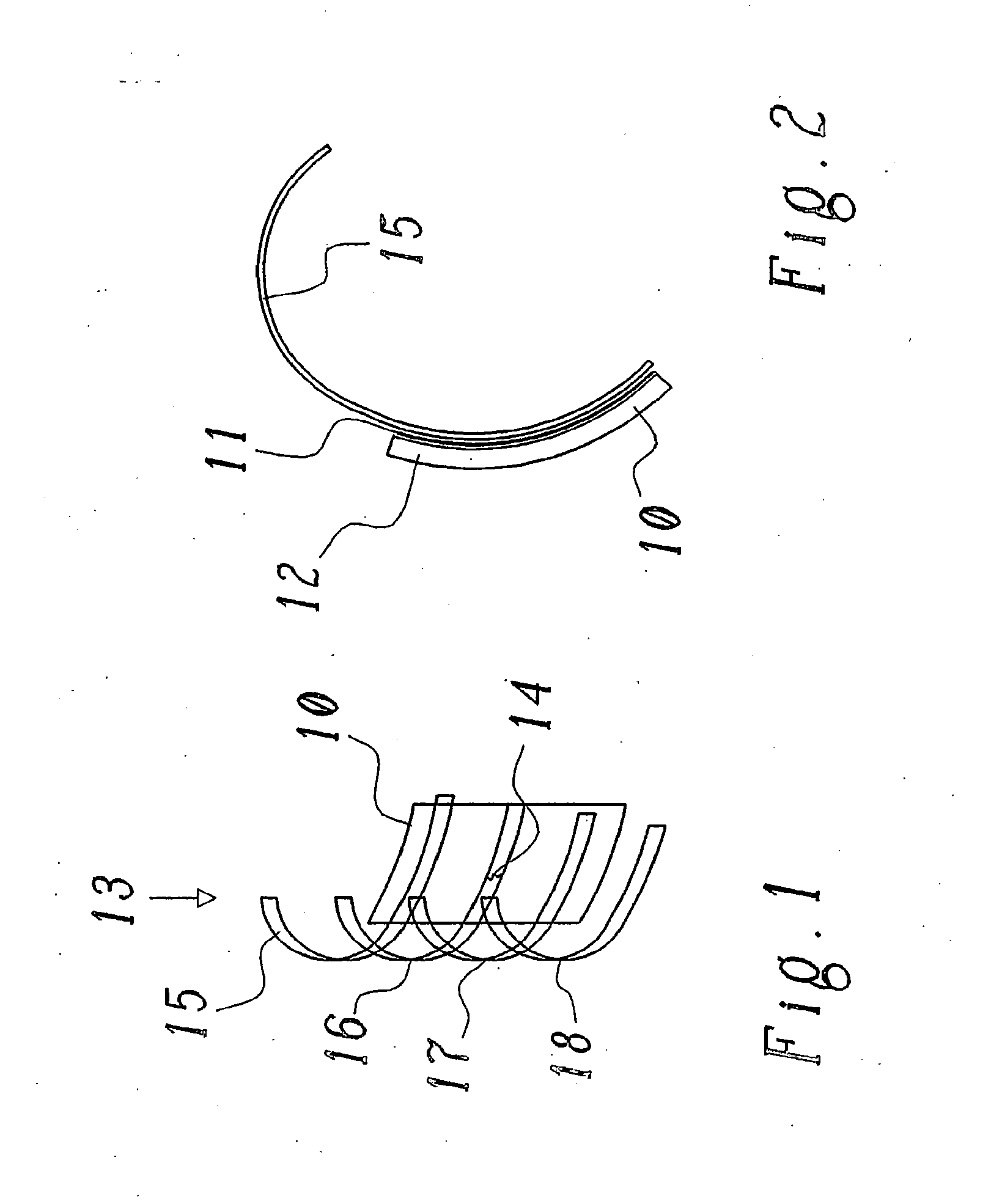Device and method for analgesic immobilization of fractured ribs
a technology of analgesic and fractured ribs, applied in the field of medical aids, can solve the problems of high risk of pneumonia in such cases, inability to perform malgaine trials with taping or surgical approaches, and inability to achieve the effects of safe use, simple production, and easy application
- Summary
- Abstract
- Description
- Claims
- Application Information
AI Technical Summary
Benefits of technology
Problems solved by technology
Method used
Image
Examples
Embodiment Construction
[0033]The device according to the invention is applied to fractured ribs (thorax fractures). In these cases the object is to reduce the movement of the injured ribs in the chest.
[0034]An embodiment of such an immobilizing device and its application are shown in a significantly simplified way in FIGS. 1 and 2. FIG. 1 shows the scheme of four ribs 15-18 from one side of a chest 13, from among which the second rib from the top, rib 16 has a fracture 14. The tissue and skin layers of the body over ribs 15-18 are not shown for simplicity reasons. The intercostal musculature is not shown either. A flat, splint-like immobilizing device 10 fitted to the arching of chest 13 is adhered to the area of chest 13 surrounding fracture 14, on a large part of the total surface. The main component of the immobilizing device 10 consists of a splint element 12 (FIG. 2) in form of a plate made of a suitably rigid, but at the same time plastically deformable, material. Adhering is achieved by applying an...
PUM
 Login to View More
Login to View More Abstract
Description
Claims
Application Information
 Login to View More
Login to View More - R&D
- Intellectual Property
- Life Sciences
- Materials
- Tech Scout
- Unparalleled Data Quality
- Higher Quality Content
- 60% Fewer Hallucinations
Browse by: Latest US Patents, China's latest patents, Technical Efficacy Thesaurus, Application Domain, Technology Topic, Popular Technical Reports.
© 2025 PatSnap. All rights reserved.Legal|Privacy policy|Modern Slavery Act Transparency Statement|Sitemap|About US| Contact US: help@patsnap.com



